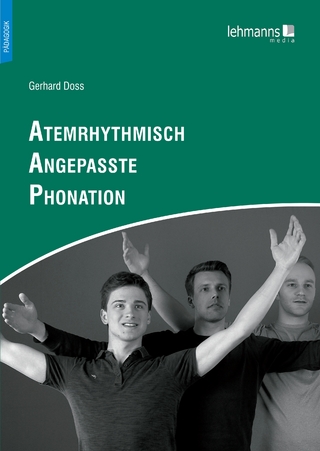
Language, Society, and New Media
Routledge (Verlag)
978-1-138-29550-6 (ISBN)
- Titel erscheint in neuer Auflage
- Artikel merken
social media and the creation of identity;
gestural communication;
emoji writing;
multimodality;
and language in the global village.
Discussions are supported by a wealth of pedagogical features, including sidebars, activities and assignments, and a glossary. In this second edition of Language, Society, and New Media, Marcel Danesi demonstrates the dynamic connections between language, society, thought, and culture, and how they continue to evolve in today’s rapidly changing digital world. It is ideal for students in introductory courses in sociolinguistics, language and culture, and linguistic anthropology.
Marcel Danesi is Full Professor of Linguistic Anthropology and Director of the Program in Semiotics and Communication Theory at the University of Toronto, Canada. He has authored numerous books and articles on language in use and on applications of sign theory to language and culture. He is currently Editor-in-Chief of Semiotica.
Preface
Features
Rapid Overview
Illustrations
1. Sociolinguistics
1.1 Language
1.1.1 Features
1.1.2 Acquiring Language
1.2 Sociolinguistics
1.2.1 Historical Roots
1.2.2 Subdivisions
1.2.3 Linguistic Anthropology
1.3 Methodology
1.3.1 Interviews
1.3.2 Fieldwork
1.3.3 Ethnography
1.3.4 Statistics
1.4 Sociolinguistics in Practice
1.4.1 Language Use
1.4.2 Personality
1.4.3 Geographical Variation
1.4.4 Social Variation
1.4.5 Bilingualism
1.4.6 Speech Communities
1.4.7 Sociolinguistics and New Media
2. Language and Society
2.1 Vocabulary
2.1.1 The Lexicon
2.1.2 Groups and Vocabulary
2.1.3 Semantics
2.1.4 Contextualized Meaning
2.2 Figurative Language
2.2.1 Connecting Concepts
2.2.2 Figurative Language and Society
2.3 Grammar
2.3.1 Morphology
2.3.2 Syntax
2.4 Phonology
2.4.1 Phonology and Society
2.4.2 Netlingo
3. Variation in Geographical Space
3.1 Dialects
3.1.1 Dialect Atlases
3.1.2 Pidgins and Creoles
3.1.3 Lingua Francas
3.2 Diglossia, Bilingualism, and Multilingualism
3.2.1 Diglossia
3.2.2 Bilingualism and Multilingualism
3.2.3 Code-Switching
3.3 Languages in Contact
3.3.1 Borrowing
3.3.2 Nativization
3.4 Standard Languages and Literacy
3.4.1 Language Loyalty
3.4.2 Language Planning
3.4.3 Literacy
3.4.4 Twitteracy
4. Variation in Social Space
4.1 Sociolects
4.1.1 Slang
4.1.2 Jargon
4.2 Register
4.2.1 Formality
4.2.3 Politeness
4.2.3 Honorifics
4.3 Style and Genre
4.3.1 Style
4.3.2 Genre
4.4 Social Variables
4.4.1 Class
4.4.2 Race and Ethnicity
4.4.3 Twitterlects
5. Language, Personality, and Identity
5.1 Personality
5.1.1 Age
5.1.2 Bilingualism and Personality
5.2 Identity
5.2.1 Theories
5.2.2 Linguistic Identity
5.3 Names
5.3.1 The Social Functions of Names
5.3.2 Nicknames
5.4 Online Identities
5.4.1 Identity Construction
5.4.2 Twin Identities
6. Conversation and Discourse
6.1 Conversation
6.1.1 Conversation Analysis
6.1.2 Grice’s Maxims
6.1.3 Speech Acts
6.2 Communicative Competence
6.2.1 Modeling Communicative Competence
6.2.2 Speech Functions
6.2.3 Politeness: A Case-in-Point
6.3 Discourse and Dialogue
6.3.1 Discourse
6.3.2 Ritualistic Discourse
6.3.3 Critical Discourse
6.3.4 Dialogue
6.3.5 Online Discourse
6.4 Body Language
6.4.1 Kinesics and Proxemics
6.4.2 Gesture and Gesticulation
6.4.3 Facial Expression
7. Writing and Society
7.1 Writing Systems
7.1.1 Pictography and Alphabets
7.1.2 Writing and Society
7.1.3 Stylometry
7.2 Compressive Writing
7.2.1 Social Implications
7.2.2 Zipf’s Law
7.3 Literacy Practices
7.3.1 Myth and Narrative
7.3.2 New Literacies
7.4 International Writing Systems
7.4.1 Artificial Systems
7.4.2 Emoji Writing
8. Language, Mind, Culture, and Technology
8.1 Classification
8.1.1 The Lexicon
8.1.2 Concepts
8.2 The Whorfian Hypothesis
8.2.1 Language and Thought
8.2.2 Specialized Vocabularies
8.3 Ethnosemantics
8.3.1 Componential Analysis
8.3.2 Schemas
8.4 Cyberspace,
8.4.1 Technologically Blended Cognition
8.4.2 Communal Brain
9. Language, Media, and Social Evolution
9.1 Language in Motion
9.1.1 Evolutionary Tendencies
9.1.2 Language Change and Virtual Communities
9.2 Mediation
9.2.1 Types of Media
9.2.2 Emergence
9.3 Communicative Competence Again
9.3.1 Conversation Analysis Revisited
9.3.2 Social Media
9.4 How to Speak to an Alien
Exercises and Discussions
Appendices
A: The International Phonetic Alphabet
B: A Brief Lesson in Basic Statistics
C: Koasati Phonemes and Alphabet
D: English Vowels
Glossary
References
Index
| Erscheinungsdatum | 30.01.2018 |
|---|---|
| Zusatzinfo | 22 Tables, black and white |
| Verlagsort | London |
| Sprache | englisch |
| Maße | 152 x 229 mm |
| Gewicht | 480 g |
| Themenwelt | Geisteswissenschaften ► Sprach- / Literaturwissenschaft ► Sprachwissenschaft |
| Sozialwissenschaften ► Ethnologie | |
| Sozialwissenschaften ► Soziologie | |
| ISBN-10 | 1-138-29550-7 / 1138295507 |
| ISBN-13 | 978-1-138-29550-6 / 9781138295506 |
| Zustand | Neuware |
| Haben Sie eine Frage zum Produkt? |
aus dem Bereich



